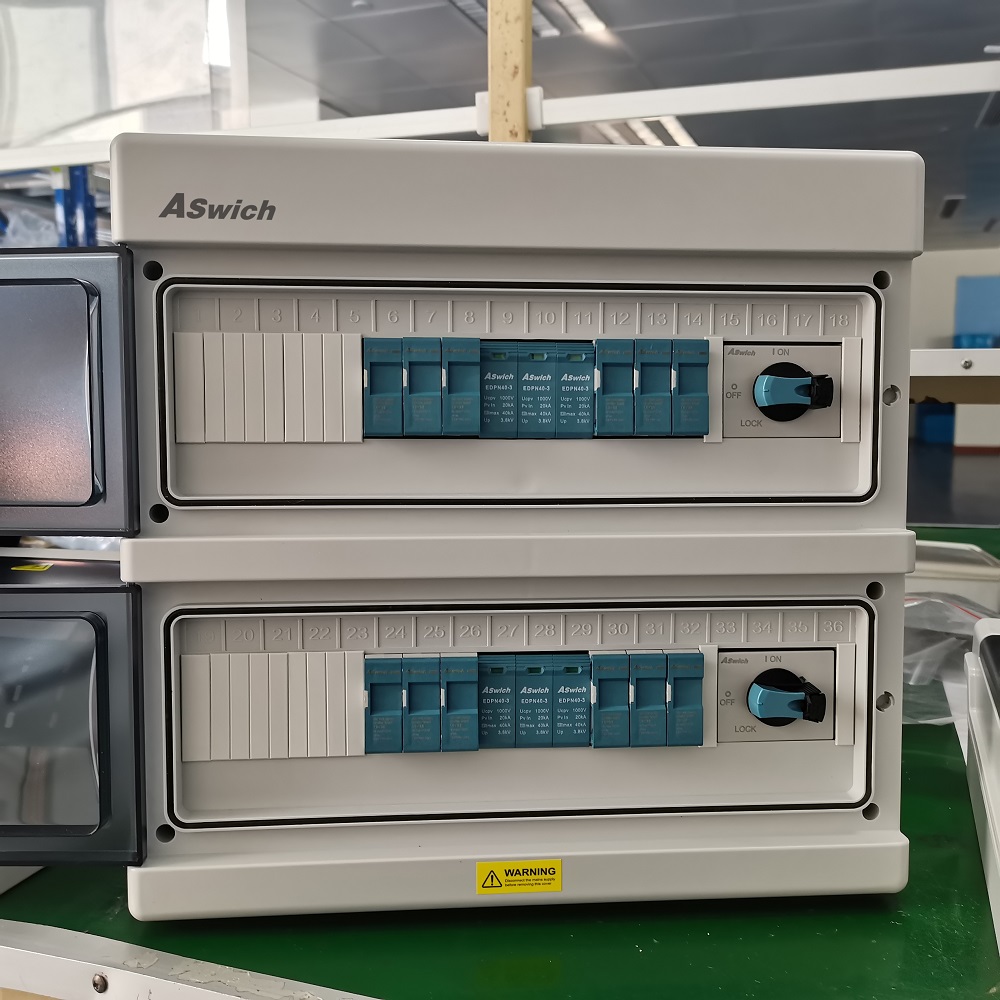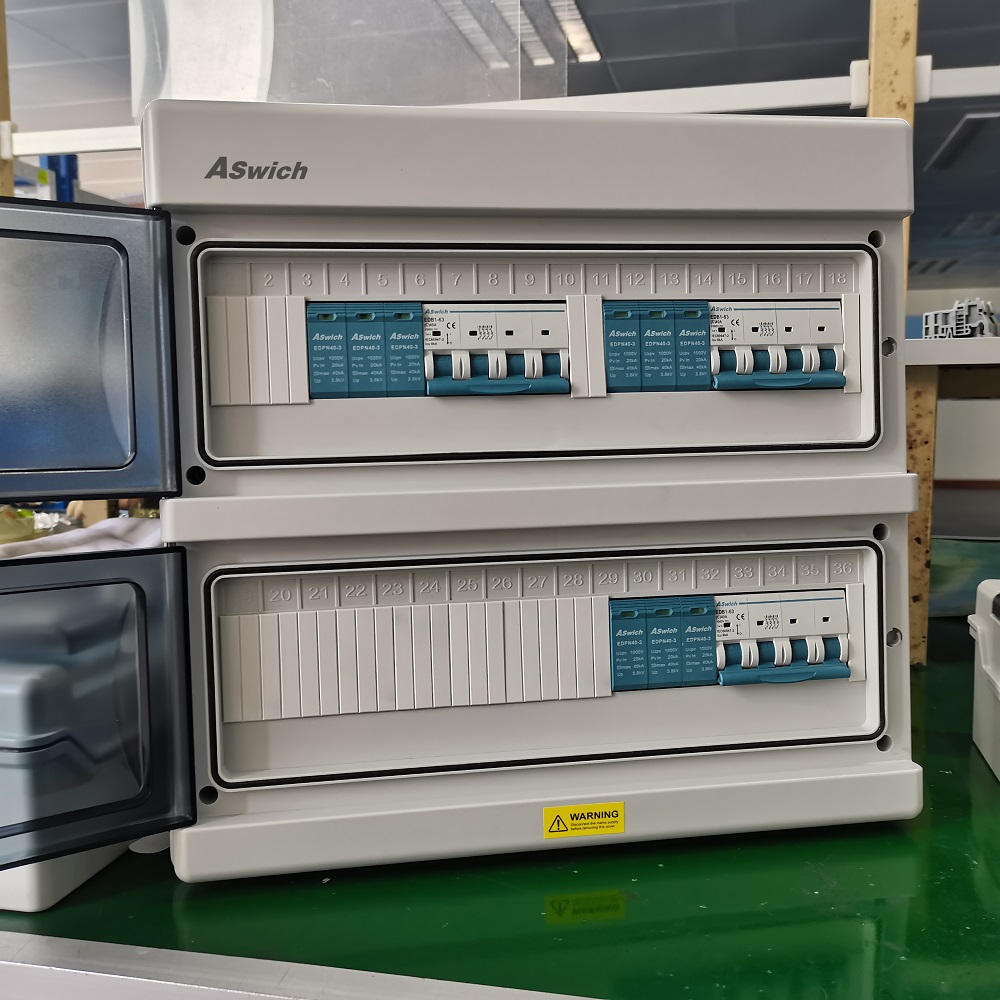The role of the combiner box is to bring the output of several solar strings together. that each string conductor lands on a fuse terminal and the output of the fused inputs are combined onto a single conductor that connects the box to the inverter. This is a combiner box at its most basic, but once you have one in your solar project, there are additional features typically integrated into the box.
Solar combiner boxes are engineered to provide overcurrent and overvoltage protection to enhance inverter protection and reliabilit.
Aswich offers a plug & play solution that accommodates overcurrent protection devices, disconnectors and surge protective devices (SPDs) in one solar combiner box. Depending on the application, combiners are equipped with monitoring devices to measure current, voltage and temperature to ensure the availability of the strings and to maximize generation. The string combiner boxes form subsystems that can be standardized according to the number of strings, voltage and rated current.

combiner boxes can have advantages in projects of all sizes. In residential applications, combiner boxes can bring a small number of strings to a central location for easy installation, disconnect and maintenance. In commercial applications, differently sized combiner boxes are often used to capture power from unorthodox layouts of varying building types. For utility-scale projects, combiner boxes allow site designers to maximize power and reduce material and labor costs by distributing the combined connections.
The combiner box should reside between the solar modules and inverter. When optimally positioned in the array, it can limit power loss.
Little maintenance is required for combiner boxes. It is a good idea to inspect them periodically for leaks or loose connections, but if a combiner box is installed properly it should continue to function for the lifetime of the solar project.

combiner box quality The quality of the combiner box is the most important consideration when selecting one, Aswich all combiner boxes should be third-party certified to conform to UL1741, the relevant standard for this type of equipment.
